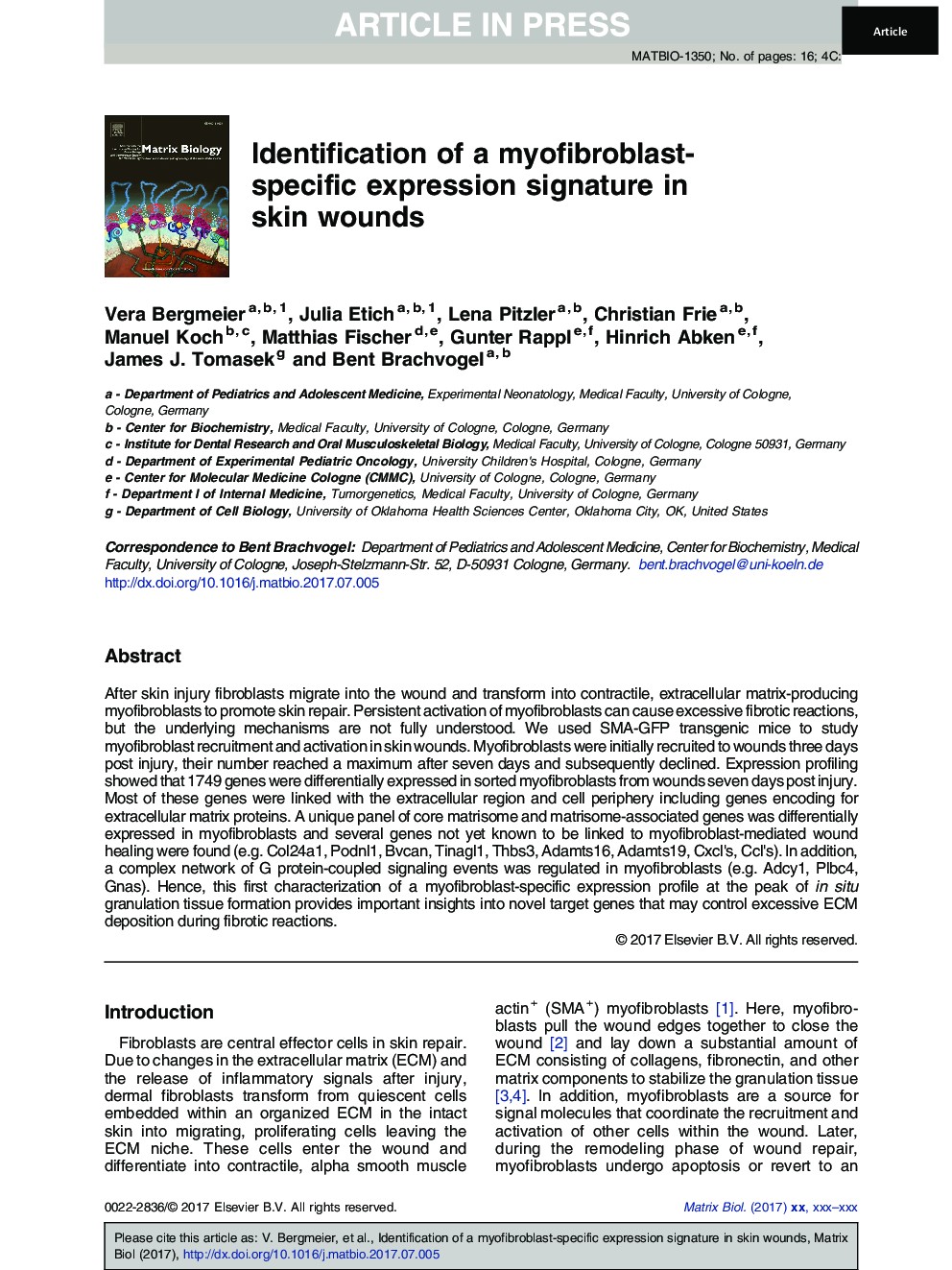| کد مقاله | کد نشریه | سال انتشار | مقاله انگلیسی | نسخه تمام متن |
|---|---|---|---|---|
| 8455098 | 1547997 | 2018 | 16 صفحه PDF | دانلود رایگان |
عنوان انگلیسی مقاله ISI
Identification of a myofibroblast-specific expression signature in skin wounds
ترجمه فارسی عنوان
شناسایی علامت بیان خاص مفیوبربلاست در زخم های پوست
دانلود مقاله + سفارش ترجمه
دانلود مقاله ISI انگلیسی
رایگان برای ایرانیان
کلمات کلیدی
ماتریکس غیر سلولی، میوفیبروبلاست، فیبریزه، کلاژن، عوامل رشد، سیتوکین ها،
موضوعات مرتبط
علوم زیستی و بیوفناوری
بیوشیمی، ژنتیک و زیست شناسی مولکولی
تحقیقات سرطان
چکیده انگلیسی
After skin injury fibroblasts migrate into the wound and transform into contractile, extracellular matrix-producing myofibroblasts to promote skin repair. Persistent activation of myofibroblasts can cause excessive fibrotic reactions, but the underlying mechanisms are not fully understood. We used SMA-GFP transgenic mice to study myofibroblast recruitment and activation in skin wounds. Myofibroblasts were initially recruited to wounds three days post injury, their number reached a maximum after seven days and subsequently declined. Expression profiling showed that 1749 genes were differentially expressed in sorted myofibroblasts from wounds seven days post injury. Most of these genes were linked with the extracellular region and cell periphery including genes encoding for extracellular matrix proteins. A unique panel of core matrisome and matrisome-associated genes was differentially expressed in myofibroblasts and several genes not yet known to be linked to myofibroblast-mediated wound healing were found (e.g. Col24a1, Podnl1, Bvcan, Tinagl1, Thbs3, Adamts16, Adamts19, Cxcl's, Ccl's). In addition, a complex network of G protein-coupled signaling events was regulated in myofibroblasts (e.g. Adcy1, Plbc4, Gnas). Hence, this first characterization of a myofibroblast-specific expression profile at the peak of in situ granulation tissue formation provides important insights into novel target genes that may control excessive ECM deposition during fibrotic reactions.
ناشر
Database: Elsevier - ScienceDirect (ساینس دایرکت)
Journal: Matrix Biology - Volume 65, January 2018, Pages 59-74
Journal: Matrix Biology - Volume 65, January 2018, Pages 59-74
نویسندگان
Vera Bergmeier, Julia Etich, Lena Pitzler, Christian Frie, Manuel Koch, Matthias Fischer, Gunter Rappl, Hinrich Abken, James J. Tomasek, Bent Brachvogel,
